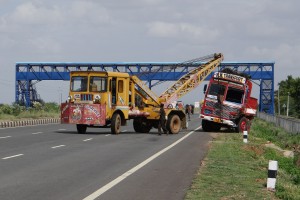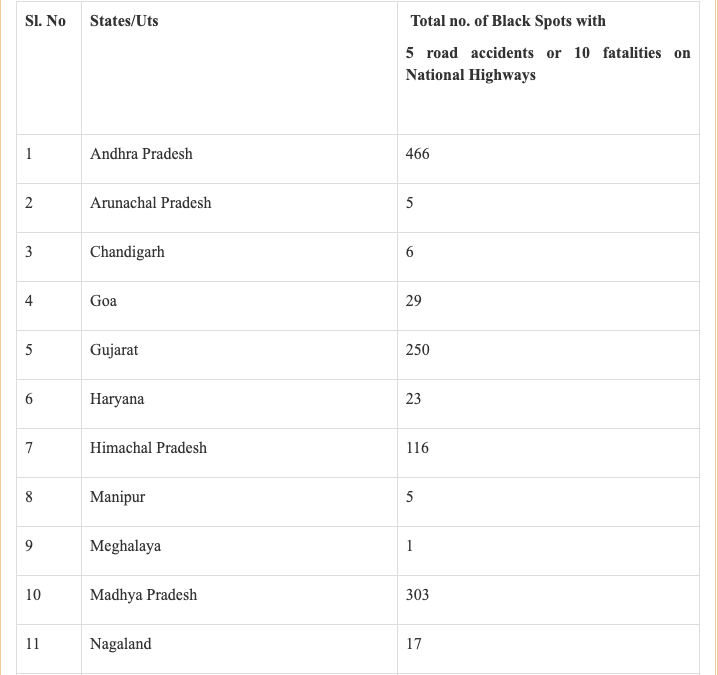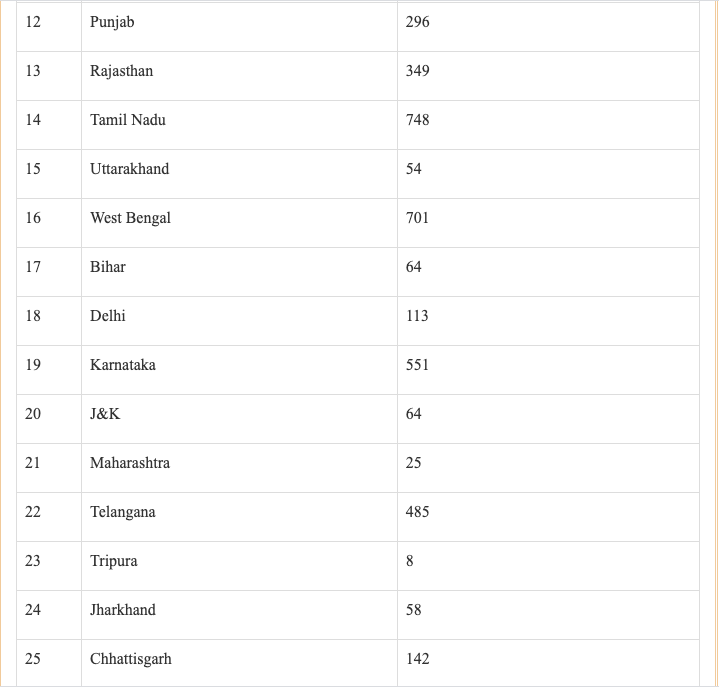
New Delhi: Tamil Nadu has the highest number of accident prone stretches known as black spots on national highway. The Transport Research Wing (TRW) of the Ministry of Road Transport and Highways has identified 748 such black spots in the state. West Bengal has been the second in the list with 701 such black spots, followed by Karnataka (551), Telangana (485), Andhra Pradesh (466), and Uttar Pradesh (405). Meghalaya has only one such black spot, the survey has found, while Bihar has only 64 such accident prone stretches.
Significantly, 52485 accidents were reported on national highways in Tamil Nadu as compared to Bihar’s 12643, between 2018 and 2020 (provisional report). Telangana reported 20659 accidents while Andhra, 22971 accidents during this period. Three States/UTs – Diu, Dadra Nagar and Haveli, and Lakshadweep reported zero accidents on national highways during this period.
Over all, while the Ministry has identified 5803 black spots on national highways based on accident and fatality data of year 2015-2018 in 30 States and Union Territories, the total number of road accidents on national highways between 2018- 2020 was 394530.
Road accident black spot is a stretch of National Highway of about 500m in length in which either 5 road accidents (in all three years put together involving fatalities/ grievous injuries) took place during the last 3 calendar years or 10 fatalities (in all three years put together) took place during the last 3 calendar years. Out of 5803 Black spots, Union Minister for Road Transport and Highways Nitin Gadkari told the Lok Sabha today that temporary measures had been taken on 5167 black spots and 2923 black spots had been permanently rectified.
The black spot data collected from States and Union Territories are based on the assessment of these States/UTs. Following is the State-wise detail of black spots identified by TRW:



Gadkari today told Lok Sabha that the Ministry is taking following steps to rectify blackspots:
- Blackspots are being rectified by immediate short term measures such as cautionary road signs and markings, transverse bar markings, rumble strips and solar blinkers etc.
- For long term rectification, measures such as Flyover, Underpasses, Footover Bridges, Service roads etc. are being provided wherever required.
- Each blackspot location is being inspected by Road Safety Officers of Regional Offices, Project Director of Concerned PIU and Road Safety Expert of the Independent Engineers (IE)/ Authority’s Engineers (AE) /Safety Consultants and recommend the mitigation measures. Based on which approval is being granted by the Regional Officer.
- NHAI has issued comprehensive guidelines on preparation of proposal, granting sanctions and execution of work for rectification of blackspots vide circular no. 1.1.31/2019 dated 19.12.2019. Under these guidelines, Regional Officers have been delegated financial power of uptoRs. 50 Cr for rectification of blackspots including land acquisition without sending files to HQ for approval.
- Traffic calming measures such as traffic warning signs, delineators, road studs, bar markings, humps at approach roads, etc. are taken at vulnerable sections of National Highways to reduce road accident fatalities.
- For rectification of blackspots, progress of rectification is being monitored at NHAI HQ and Ministry through regular meetings.
While the emergency / medical facilities for the road accident victims are provided as per the respective contract or concession agreements signed between National Highway Authority of India (NHAI) and the contractor or concessionaire, the NHAI has recently signed contract agreements for supply, operation and maintenance of 126 AIS-125 compliant Basic Life Support ambulances across NHs in the country, the Minister stated.
– global bihari bureau





